Back to the race course
At 15:00 local (19:00 GMT) todday, the four Class40s in the doublehanded Global Ocean Race crossed the Leg 4 start line in Punta del Este and are now heading north up the Atlantic for Charleston, South Carolina.
Throughout a windless and cloudless morning, the GOR teams continued to load their Class40s with the final necessities of fresh vegetables and bread on the shadeless pontoons in the blistering sun. At 13:00 local, the teams motored out of the marina to the Leg 4 start managed by Pablo Elola and Alvaro Robaina and their team from the Yacht Club Punta del Este with the line positioned between the Puerto Punta del Este harbour breakwater and the small, uninhabited island, Isla Gorriti, just minutes from the pre-race pontoons.
In around nine to 12 knots of southeasterly breeze, the majority of the Class40s chose to hit the line on starboard with the Dutch team of Nico Budel and Erik van Vuuren heading close to the harbour breakwater on Sec. Hayai before tacking onto port and hitting the line first, chased by Conrad Colaman and Scott Cavanough on Cessna Citation. Colman and Cavanough pulled ahead as the fleet raced parallel to Las Mesitas with the South African duo on Nick Leggatt and Phillippa Hutton-Squire staying close to the rocky shoreline on Phesheya-Racing and Marco Nannini and Sergio Frattaruolo trailing with Financial Crisis.
Leggatt and Hutton-Squire played hard and kept their nerve, cutting the corner through a narrow channel in the shallow water off La Salina and were first into the South Atlantic with Cessna Citation in hot pursuit and Colman and Cavanough first to hoist their Code 0 as the fleet sailed towards the island of Isla de Lobos and the gathering thunder clouds on the eastern horizon.
While Leg 4 is shorter than the previous three legs through the Atlantic, Indian and Pacific Oceans, the 5,700-mile course to Charleston should take around 30 days and is a complex route with multiple challenges facing the teams with natural and manmade obstacles. Joining Conrad Colman on the GOR’s overall leader, Cessna Citation, Scott Cavanough shared his thoughts on the opening stage of Leg 4 shortly before leaving the dock on Monday afternoon: “The first week is certainly going to be mostly upwind with a little light patch as we get a bit closer to Salvador,” says the 30 year-old Australian looking 1,700 miles down the track. Cavanough joins Colman for GOR Legs 4 and 5 and avoided the extended upwind sailing through the Pacific Ocean on Leg 3. “On the last leg I missed out on all the upwind stuff so now I get to go upwind for a week!” he adds with reluctance.
Within the first ten days of the leg, the four Class40s could potentially sail through a chain of Brazil’s offshore gas fields starting south of Rio de Janeiro with the huge Santos Basin field leading to the neighbouring Campos and Espiritu Santo fields to the north. Although the drilling platforms are brightly lit and the loom at night can be spotted from an enormous distance, the associated commercial traffic around the rigs ferrying supplies and manpower are often hard to spot in an area that is infamous for unlit fishing boats and where the use of AIS is rare.
The boats opting for an early inshore route northwards will also encounter the southerly-flowing Brazil Current running along the continental shelf and forking east and south as the shelf widens at around 22S: “We’ve looked at the Brazil current and also the further you are in towards the coast, the more the wind parallels the coast,” explains Cavanough. “So there is a point that we’ll leave the coast and get out of the wind and current,” he adds, withholding the precise tactical details. “There’ll be a lot of shipping for sure and hopefully we might cross tacks with a Volvo 70,” says Cavanough as the Volvo Ocean Race leaders, Puma and Groupama, pile north at 15 knots 430 miles to the south of the GOR fleet.
As the boats cross the Celox Sailing Scoring Gate off Recife 2,300 miles north of the start, and cross their outward track from Leg 1, the fleet will curve round to the north-west following the coast of Brazil. Those boats sailing along the continental shelf can benefit from the northerly-flowing Guiana Current which continues along the coast of South America entering the Caribbean between Grenada and Latin America. However, sailing close the coast comes with more risks than fishing boats, nets and pots as crossing the Equator at the latitude of the 150-mile wide mouth of the River Amazon - which discharges sediment, large logs, tree trunks and debris far offshore – may threaten the keel and twin rudders of the boats.
For Erik van Vuuren who joins Nico Budel on Sec. Hayai for Leg 4, the first fortnight is crucial. “I think until the Doldrums it’s going to be a very tactical race and it’s important to get in a good position,” said the 42-year-old Dutchman as he prepared to leave the dock for the start line. “Right now, there’s no point in even looking at the weather in the Doldrums as it’s about two weeks away and we’ll have to wait until we’re closer.”
Having negotiated the Doldrums, the fleet will find the Trade Winds and, leaving the Caribbean’s Windward and Leeward Islands to port, the boats will encounter the Gulf Stream as they approach the US coast where the five mph, northerly surface current can be a huge benefit but northerly breeze can whip the 100km-wide band of warm water into maelstrom of steep and irregular waves.
GOR crew list for Leg 4 from Punta del Este to Charleston:
Cessna Citation: Conrad Colman (NZL)/Scott Cavanough (AUS)
Financial Crisis: Marco Nannini (ITA) and Sergio Frattaruolo (ITA)
Phesheya-Racing: Nick Leggatt (RSA) and Phillippa Hutton-Squire (RSA)
Sec. Hayai: Nico Budel (NDL) and Erik van Vuuren (NDL)
Buckley Systems: RTD
Campagne de France: DNS

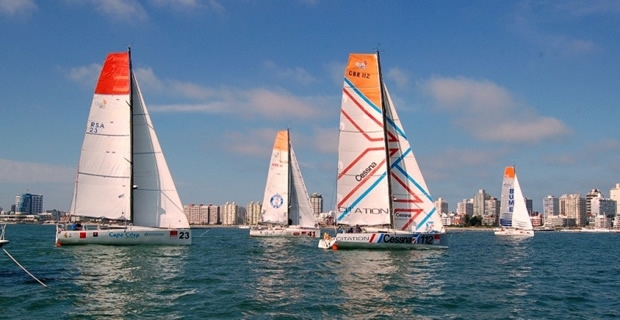
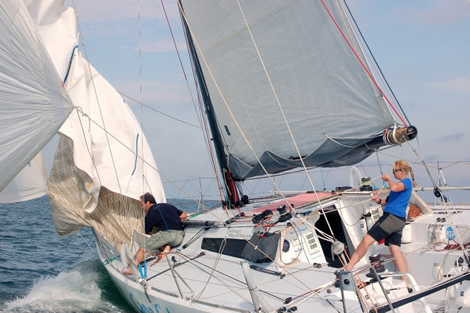
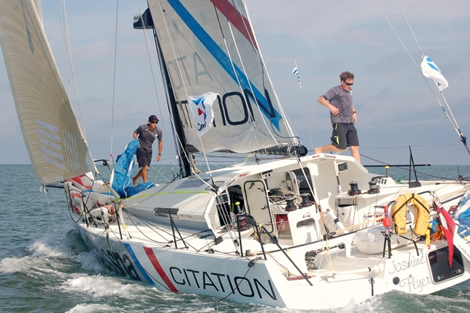
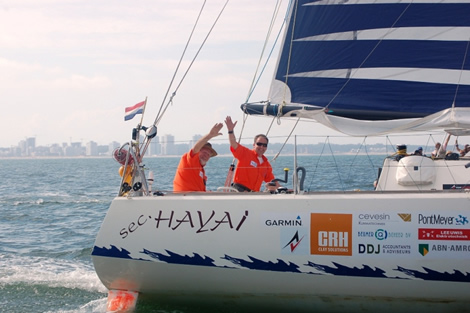
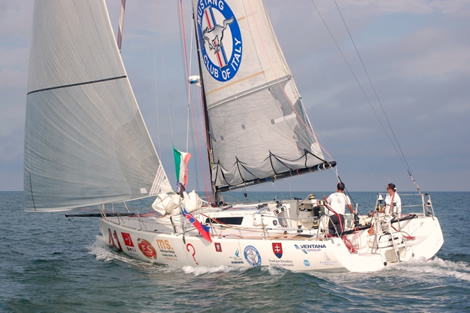







Latest Comments
Add a comment - Members log in